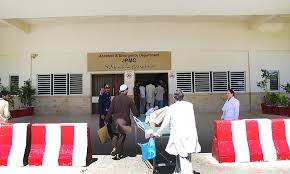WEB DESK
At least nine more people have died from water-borne diseases in flood-hit areas of Sindh, officials said on Tuesday, warning they risked losing control of the spread of infections in a crisis that UNICEF described as “beyond bleak”.
An intense and long monsoon dumped around three times as much rain on Pakistan than on average in recent weeks, causing major flooding which killed 1,559 people, including 551 children and 318 women, according to the disaster management agency.
This figure does not include those killed by the disease in the aftermath.
Hundreds of thousands of people displaced by the floods are living in the open and as flood waters spread over hundreds of kilometres start to recede, which officials say may take two to six months, stagnant waters have led to diseases like malaria, dengue fever, skin and eye infections and acute diarrhoea. read more
“There is already the outbreak of the disease,” said Ahsan Iqbal, Pakistan’s planning minister, who is also the head of a national flood response centre jointly run by the government and the military.
“We fear it may get out of control,” he told a news conference in Islamabad.
The World Health Organization (WHO) has said the surge in diseases has the potential for a “second disaster”.
In Sindh, the region worst hit by the floods, the provincial government said nine people died of gastroenteritis, acute diarrhoea and suspected malaria on Monday, bringing the total number of deaths from diseases to 318 since July 1.
Over 2.7 million people have been treated for water-borne diseases at makeshift or mobile hospitals set up in flood-hit regions since July 1, it said, with 72,000 people treated at these facilities on Monday alone.
Three other provinces have also reported thousands of disease cases.
















































